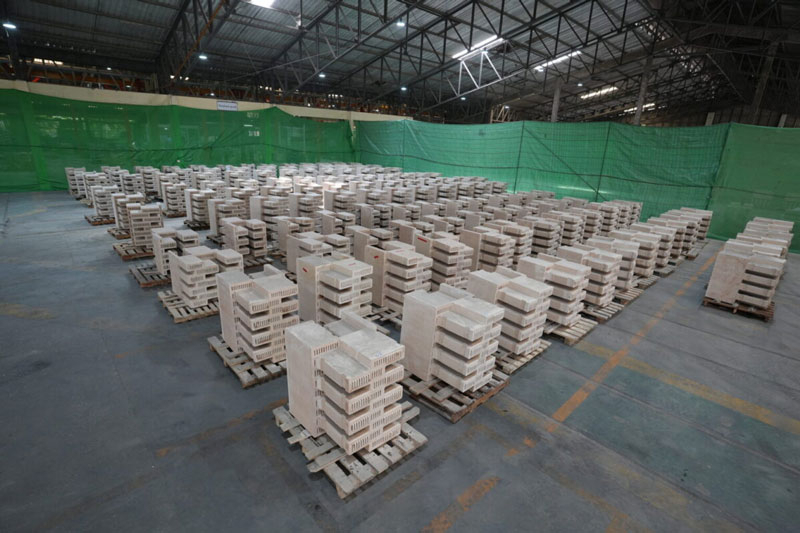A group of scientists at Stanford University published a paper in which they predicted the growth rate of thermal accumulation in refractory bricks in the United States. By 2050, experts expect a complete transition of heat-intensive industries in the United States to renewable energy sources. Bricks will become an inexpensive alternative to chemical batteries, accumulating and releasing about 14% of energy for heat-intensive industries.

Image source: Rondo Energy
Firebricks are made from common materials, so the cost of a firebrick thermal storage system would be more than ten times cheaper than building an equivalent energy storage system using conventional electric batteries. Depending on the material used, the bricks can be heated directly if they are conductive, such as with graphite, or by an external heating element if the bricks are not conductive.
Thermal accumulators made of bricks are considered by the current US authorities as projects with a high degree of repeatability, which is extremely convenient for the mass creation of installations. In particular, the US Department of Energy is currently discussing a $75 million subsidy to Diageo North America if it agrees to host two brick-based thermal storage units manufactured by Rondo Energy. The latter is supported by the Bill Gates Foundation, and is building a megafactory in Thailand for the production of heat-storing bricks, and the production needs sales.
According to the findings of scientists from Stanford, in the United States, renewable energy sources can provide heat for up to 90% of energy-intensive industrial processes. To meet this demand, brick energy storage systems must achieve a capacity of 2.6 TWh with a peak output of 170 GW. This will reduce harmful emissions from US industry by 9.6%. If the world’s heat-intensive production is supplied with bricks using exclusively renewable energy, it will be necessary to accumulate and supply 2.1 TW of thermal power to the load.
At this scale, firebrick thermal storage systems would not only replace 14% of battery capacity, but would also reduce annual hydrogen production for power generation by approximately 31% and underground thermal storage capacity by approximately 27%.
As for the cost of storing thermal energy in bricks, analysts say that it will be at least ten times cheaper than the cost of storing energy in batteries. Thus, according to some estimates, in 2035 the cost of energy storage in electric batteries will be $60 per kWh. This gives an energy cost of $6 per 1 kWh if stored in fire bricks. And given the rapid decline in the cost of chemical batteries, there remains a possibility that the amounts will be even lower.